13 Popular Teriyaki Sauce Brands, Ranked
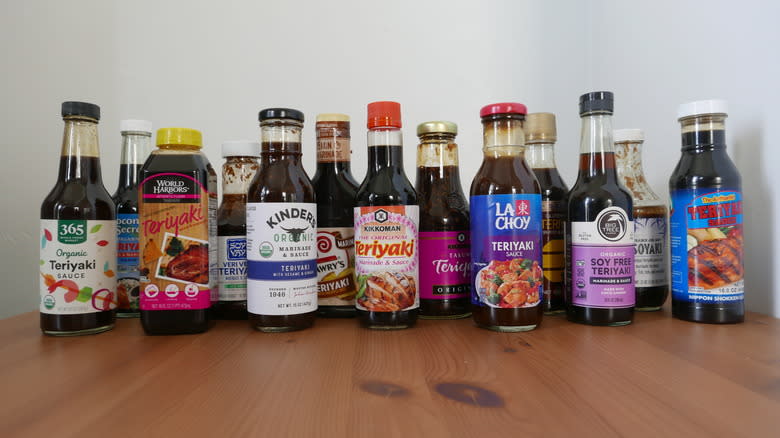
Salty, sweet, and umami. These are the three basic flavors that you want to lovingly envelop your taste buds when you sink your teeth into teriyaki. Teriyaki sauce originated in Japan, where it is still a staple food. The word teriyaki comes from the Japanese words teri, meaning shine, and yaki, which refers to grilling or broiling.
This makes sense when you behold a sizzling hot plate of teriyaki, gleaming in the light and slightly charred from the grill. Although a simplified teriyaki sauce made with just four ingredients (soy sauce, mirin, sake, and sugar) has existed in Japan for centuries, this tangy, salty sauce has been tantalizing the American palate since it became popular here in the 1960s. In fact, there's an argument that teriyaki sauce didn't originate in Japan because of just how much the sauce as we know it has evolved since it arrived in the U.S.
Although most of the teriyaki sauce consumed in the U.S. today isn't quite like the traditional Japanese version, the delicate balance of rich flavors that it's meant to impart on foods remains similar. That's why I'm ranking teriyaki sauces based on the balance of sweet, salty, and umami flavors that they provide as well as their textures. For teriyaki sauces labeled as marinades, I poured them over tofu and let them sit for 30 minutes before cooking them. Read on to find out about the popular teriyaki sauces that you should use to make teriyaki at home.
Read more: 16 Worst Canned Foods You Can Buy
13. La Choy Teriyaki Sauce
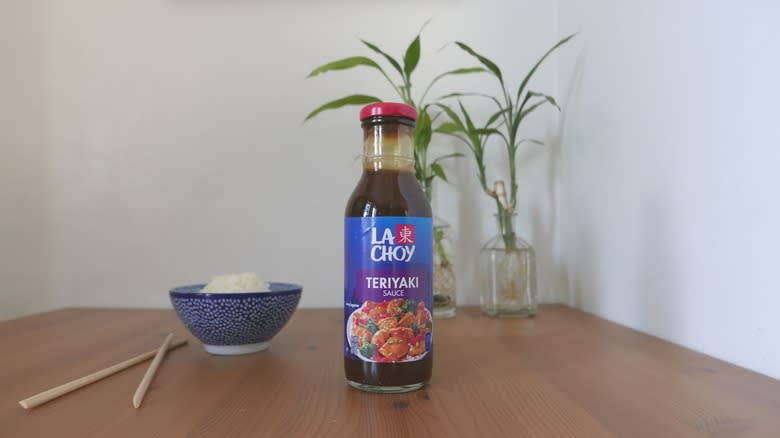
La Choy? More like La Cloy, because this sauce is cloyingly sweet and lacks the distinctive umami complexity that is the hallmark of a good teriyaki sauce. Flavor-wise, there is little more to this sauce than soy sauce, sugar, and a tiny hint of vinegar. Although there is ginger purée and a few little chunks of garlic floating around in the bottle, their flavors are almost undetectable.
In terms of texture, the sauce is thickened with too much corn starch so that it falls out of the bottle in mucous globs rather than a cohesive sauce. La Choy was a case of "you get what you pay for," since it was not only one of the cheapest sauces on the list but also one of the worst. Unfortunately, I had to rank this sauce last as it seemed to fly in the face of everything I love about teriyaki.
12. Lawry's Teriyaki Marinade
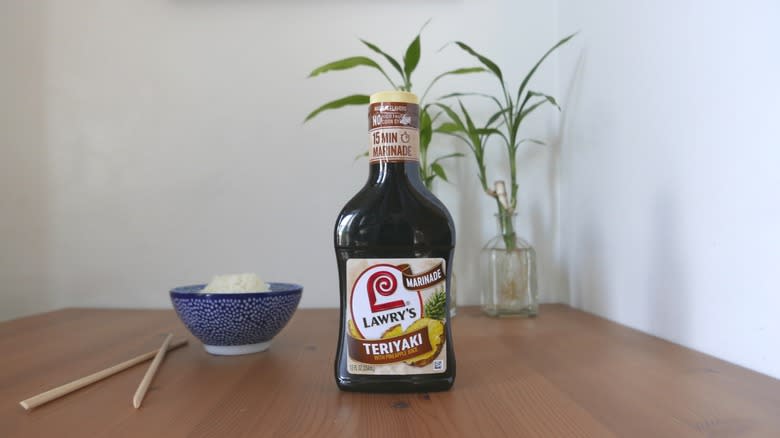
With the pineapple featured on this bottle's packaging, I was expecting Lawry's teriyaki marinade to have a sour bite, but the acidic component in this sauce was so strong that you couldn't make out any pineapple flavor. You can find Lawry's products in almost any major grocery store chain in the United States, so if you're in a bind, it'll get the job done, but only just barely. It's also one of the most affordable options on the list.
To be fair, Lawry's was the only sauce on the list that was designated only for use as a marinade. Even so, the flavor had very little to do with teriyaki and was sour to the point of being almost acrid. Lawry's is thickened with corn starch and the sauce is a bit viscous for a marinade. It did add flavor to our tofu, it just wasn't the flavor I wanted.
11. World Harbors Maui Mountain Teriyaki Sauce
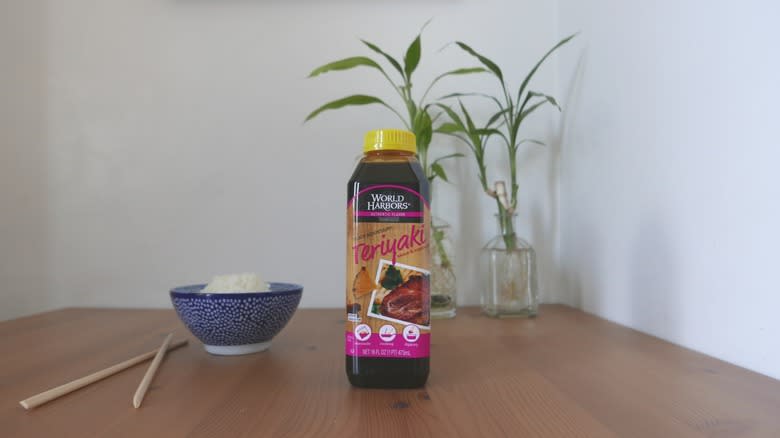
The first ingredient listed on World Harbors Maui Mountain teriyaki sauce is high-fructose corn syrup, and you can taste it. The sweetness hits first and it hits hard, effectively eclipsing most of the other flavors in this sauce. The bottle depicts a bright yellow slice of pineapple and the ingredients list indicates that the sauce is sweetened with pineapple juice in addition to high-fructose corn syrup, but I tasted as hard as I could and couldn't find the pineapple flavor. Nor could I detect the addition of garlic, which is also featured in the ingredients.
The sauce also includes citric acid, which gives it a slightly sour bite and it tries to hide the fact that this sauce is little more than sweetened soy sauce. Even mixed with the savoriness of the soy sauce, the citric acid isn't enough to offset the sickly sweetness of the corn syrup.
10. Kikkoman Original Teriyaki Sauce And Marinade
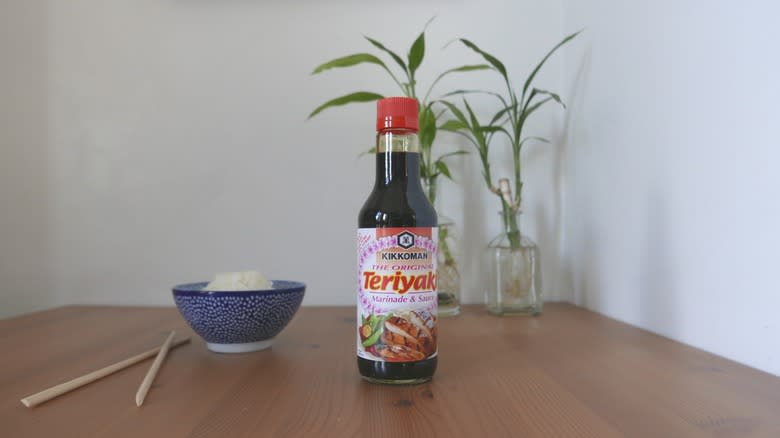
Being the Asian food powerhouse that it is, Kikkoman has two different types of teriyaki sauces. This is the thinner, simpler, more savory version of the two. The company is known for its quality soy sauce, and although it's good, there's more than enough of it in this teriyaki sauce. With its overwhelming flavor, this Kikkoman sauce ends up tasting more like soy sauce than it does teriyaki sauce. While some other sauces were too sweet, this one doesn't have enough sugar to balance out the concentrated flavor of soy sauce.
Although there are other flavors included like onion and garlic, it's difficult to get past the saltiness that effectively eclipses almost any other flavor in this sauce. The sauce is very thin, so it's better used as a marinade than it is as a condiment. It did add some flavor to the tofu I marinated, but I may as well have just used soy sauce.
9. Coconut Secret Teriyaki Sauce And Marinade
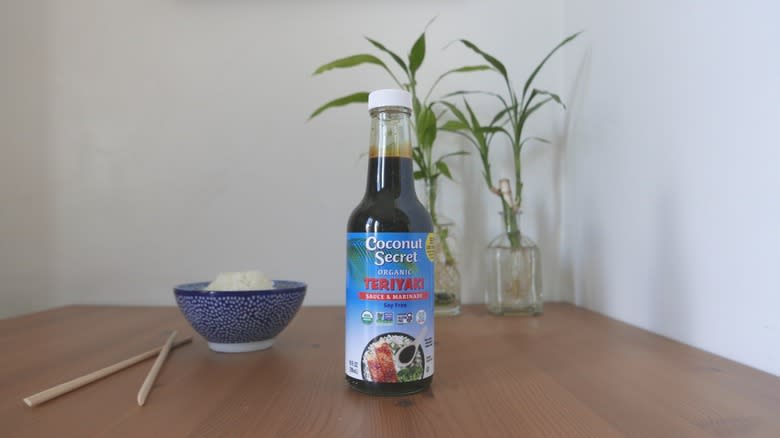
Coconut Secret teriyaki sauce and marinade contains a lower sodium content than many of the other sauces on the list, and though you may make your cardiologist proud by choosing this sauce, your taste buds may not be quite as thrilled. This is one of two sauces on this list that contains coconut aminos, a soy sauce swap that's packed with flavor (and still vegan), but that doesn't quite hit the umami flavor notes that make soy sauce so perfect for teriyaki.
Coconut Secret is also unique among the sauces on this list in that it contains no added sugar. In a traditional teriyaki sauce, sugar's sweetness balances out the other intense flavors of teriyaki and without it, it tastes more like a soy sauce substitute than it does a teriyaki sauce. That said, if you've cut sugar out of your diet entirely, it's one of the only options you've got.
8. San-J Teriyaki Stir-Fry And Marinade
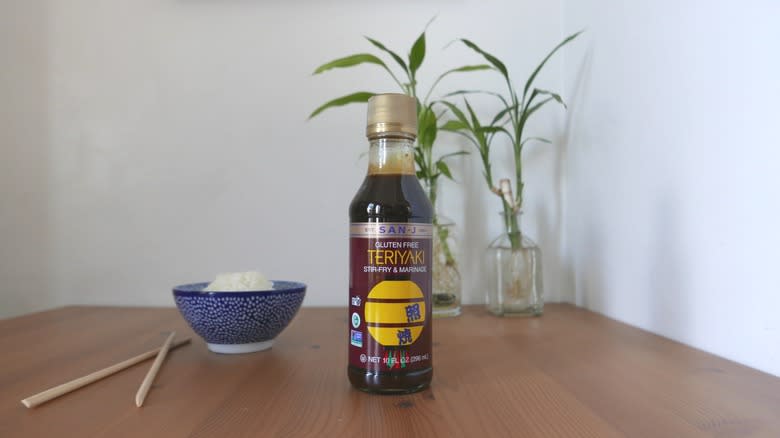
At first, I couldn't put my finger on what made San-J teriyaki sauce taste a little different from the other sauces on this list. The hit of intense saltiness that hit the tongue on impact gave way to a curious sour taste that I determined was a mix of apple cider vinegar and sake. While traditional Japanese teriyaki always contains sake, San-J was the only sauce on our list that included it in the recipe, and the sharpness that it added was a plus.
Unfortunately, this sauce was overwhelmingly salty and it didn't have enough sweetness to balance out the salt content combined with the acidic bite of the vinegar and sake. San-J indicates that it should be used as a stir-fry sauce and marinade and I concur since it's too thin to be used as a condiment. While there were flavors in San-J that we enjoyed, the balance was just a little off.
7. Nippon Shokken Teriyaki Sauce
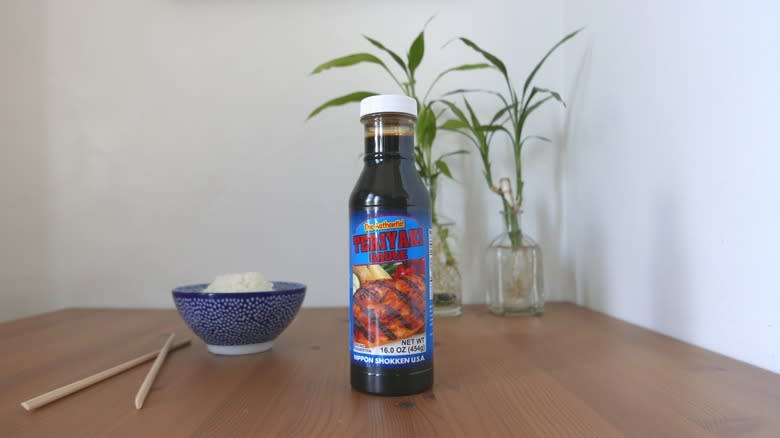
Put a bite of teriyaki in your mouth that's been covered in Nippon Shokken teriyaki sauce and you're hit by a wave of syrupy sweetness. While this isn't always ideal for a teriyaki sauce, Nippon Shokken reminded us of Seattle-style teriyaki, which is a regional subcategory of teriyaki that typically uses a sweeter version of teriyaki sauce. The dark, sugary sauce is thickened with food starch and has a viscous consistency that makes it ideal to use as a condiment added toward the end of the cooking process.
While the bottle indicates that it can be used as a marinade, I found that the thickness of the sauce made it too gooey to be effective for marinating and that the flavors didn't penetrate the tofu the way they did with other sauces. That said, this sauce added an attractive glossy shine to my food. This sauce may not be for purists and it was definitely too sweet, but it was still delicious.
6. Big Tree Soy Free Teriyaki
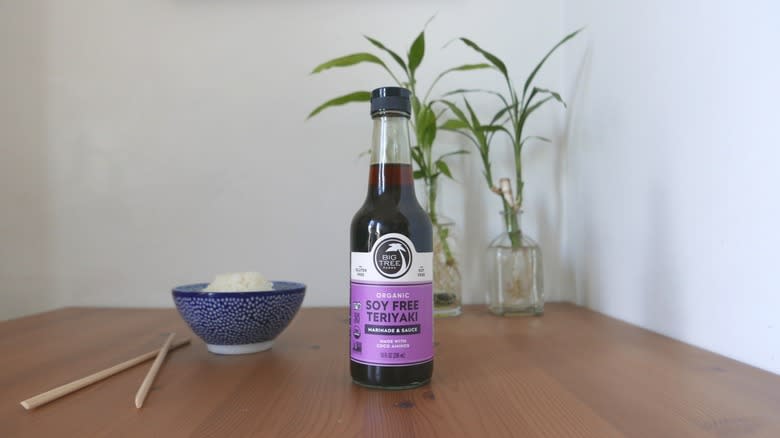
Big Tree is one of the few teriyaki sauces available on the market that doesn't use soy sauce, which is great news for teriyaki lovers with a soy allergy. Instead of soy sauce, Big Tree uses coconut aminos to give the sauce a slightly funky tang. Coconut aminos are widely known as a fermented soy sauce substitute for all your soy-free cooking needs and are made with coconut blossom nectar and salt. While the flavor of coconut aminos is a little lighter and sweeter than soy sauce, it still brings the requisite salt factor.
While I enjoyed the flavor of Big Tree, it didn't taste enough like teriyaki sauce. The sauce had a good level of sweetness and a strong sesame flavor, but I was missing the distinctive flavor that I've come to associate with teriyaki sauce. Its thin consistency makes it better for use as a marinade than as a condiment, and be sure to give the bottle a hard shake before you use it because the sesame oil naturally floats to the top.
5. Kinder's Organic Teriyaki Sauce
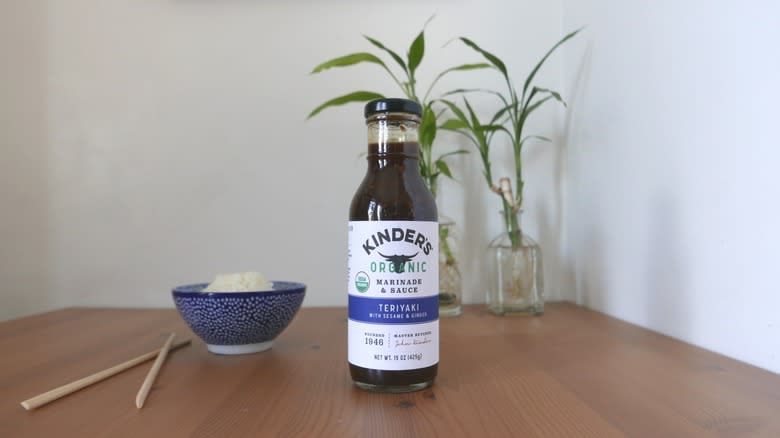
If you're looking for authentic Japanese teriyaki sauce, you should skip Kinder's. But if you're in the market for a rich, balanced sauce with the classic characteristics of an Americanized teriyaki experience, then it might just be the sauce for you. Kinder's teriyaki is one of the sweeter sauces on the list, but the sugar is balanced out by the soy sauce and vinegar. These three basic flavors form an effective base that carries the ginger and sesame flavors, which are also featured prominently.
As it came out of the bottle, I noticed this sauce was on the thicker side, which made it great to use as a condiment because it really coats the food. While the bottle indicates that this is a marinade as well as a sauce, I found it to be too thick and sugary and not quite acidic enough to be effective for that purpose. That said, the sauce ticked all my boxes for solid American-style teriyaki.
4. Soy Vay Veri Veri Teriyaki Sauce
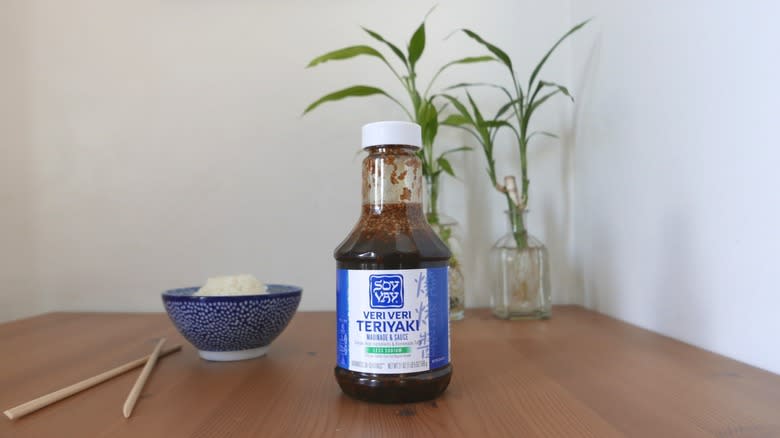
I love a pun, which would've scored Soy Vay an immediate bonus point if I wasn't solely here for flavor. The company was started by a Jewish and Chinese-American couple and creates kosher Asian products that have become staples in kitchens across the country. And in the case of the Veri Veri Teriyaki sauce, it seems that the people at Soy Vay know what they're doing. This sauce boasts a well-balanced flavor profile that hits the tongue with vinegar and soy sauce flavors that give way to onion, garlic, and the distinct crunch of whole sesame seeds.
Soy Vay can be used as a condiment and it also has enough acidic bite to be an effective marinade. The sugar content is just high enough to match the saltiness of the soy sauce and the sharpness of the vinegar without making the sauce too cloying. My biggest gripe about Soy Vay Veri Veri teriyaki was that there are so many sesame seeds that they clog up the top of the bottle when you're trying to pour the sauce. Even after a "veri veri" vigorous shake, I had to poke a chopstick through the sesame seed blockage at the bottle's neck to let the sauce out.
3. Trader Joe's Soyaki
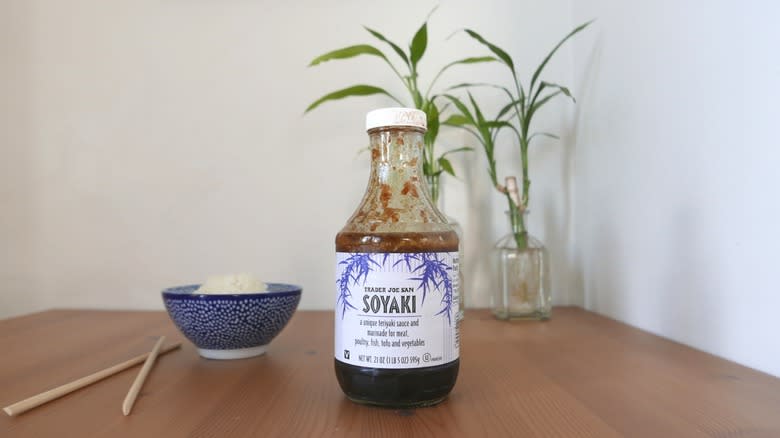
Trader Joe's is renowned for affordable high-quality products, and its Soyaki teriyaki sauce is no exception. The first thing you notice about this sauce is that the bottle is full of sesame seeds and bits of garlic that float to the top, so it's crucial that you give it a vigorous shake before you pour it. It's one of the more ginger-forward sauces on the list, which I thought went nicely with sesame, garlic, and onion flavors also included.
It's one of the few sauces on the list to include soybean oil and although it doesn't provide much in the way of taste, it does help give the sauce a bit of richness, which makes up for the fact that the sauce is on the thinner side. This provides the versatility that makes it a good choice whether it's used as a marinade or a condiment. I also appreciated that this sauce had just enough sugar to match the sour taste of vinegar, but I did find the saltiness to be just a tad too much.
2. 365 Organic Teriyaki Sauce
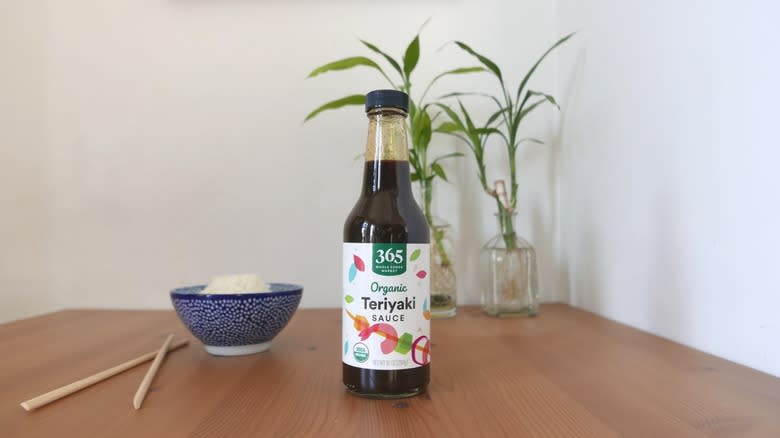
The first thing I noticed about 365 Organic Teriyaki Sauce is that this sauce doesn't have the bells and whistles that many of its competitors do. The sauce boasts flavors that are simple, but remarkably effective. The saltiness from the soy sauce is the first thing that hits, followed by a sour bite of vinegar and delicate hints of ginger, garlic, and sesame. It's just sweet enough to balance out the sharper elements without veering into the sugary, syrupy territory that is the death knell of some of the sweeter sauces on the list.
I noted that in addition to cane sugar, this sauce contains molasses, which may be responsible for the extra dose of richness that the sauce provides. Also, I love that all of the ingredients in this teriyaki sauce are organic. Although Whole Foods Market has a reputation for being pricey, this sauce was pretty reasonable compared to many others on the list. Some even say that Whole Foods is the best store for organic shopping. So if you're looking for a solid organic teriyaki sauce, it may just be the place to go.
1. Kikkoman Yakumi Teriyaki Sauce
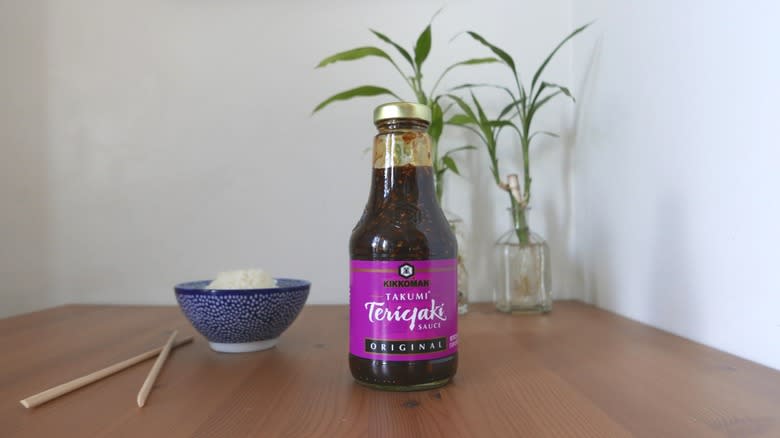
Kikkoman is a trusted brand when it comes to Japanese ingredients, and this teriyaki sauce demonstrated the company's continued commitment to bringing outstanding Japanese flavors into American kitchens. Despite that Kikkoman is a Japanese company, Kikkoman Takumi sauce is more in line with the American-influenced sauces that contain more flavors than traditional Japanese teriyaki sauces. And it does it right, which is why this sauce is at the top of this list.
The salty soy sauce (the product for which the company is perhaps best known) provides a perfectly salty backdrop to other flavors: garlic, sesame, and onion. The sauce also contains mirin, a type of rice wine that is an essential ingredient in Japanese cooking. The mirin in this sauce provides an added layer of umami complexity that rounds out the sweetness and saltiness. The texture of this winning sauce is also thick enough to properly coat food without being too gelatinous or syrupy. So if you're looking to make an all-star teriyaki dinner, look no further.
Methodology

I used a few different methods to taste these teriyaki sauces. First, each sauce was tasted on its own to get an unadulterated sense of the flavor profile. Sauces designated as marinades were poured over a piece of tofu and allowed to marinate for thirty minutes before being cooked in a pan and served over a bed of white rice.
The teriyaki sauces in this trial were judged using a few simple criteria: texture, taste, and flavor balance. Ideally, teriyaki sauce has a texture slightly thicker than soy sauce, but not as thick as ketchup. For sauces designated as marinades, I was emore lenient if the sauce was thinner than expected. The taste of teriyaki sauce should have an umami saltiness from the soy sauce, a sour bite from an acidic component like sake or vinegar, and a slight sweetness from the sugar. This combination should support any additional ingredients like ginger, sesame seeds, or garlic, which are often added to American-style teriyaki sauces. Each of these components should work together without any single ingredient dominating the overall experience of the sauce.
Read the original article on Tasting Table

